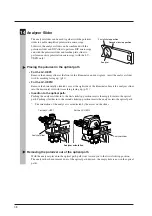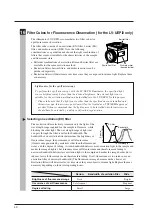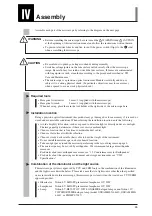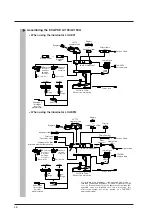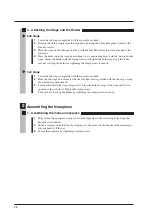
37
III. Operation of Each Part
IN
OUT
First clickstop position
Second clickstop position
Lambda plate
(wavelength plate)
UV polarizer slider
The UV polarizer slider is used for the epi-microscopy under the UV excitation light to make the
excitation light to the linear polarization. The UV polarizer will deteriorate over time, so change it
as necessary.
13
Lambda Plate Slider (for the LV-UEPI2 only)
If the LV-UEPI2 is used for the illumination, the lambda
plate slider can be used together with the polarizer slider
and analyzer slider to perform sensitive polarization
microscopy.
Placing the lambda plate in the optical path
Remove the dummy slider found in front of the polarizer slider, and in its place, insert the lambda
plate slider. (p.51)
Pushing the lambda plate slider in to the first clickstop position inserts the empty hole into the
optical path. Pushing it further in to the second clickstop position inserts the lambda plate into the
optical path.
Removing the lambda plate out of the optical path
With the lambda plate placed in the optical path, pull it out in the right direction to the first
clickstop position. The lambda plate is now out of the optical path.
















